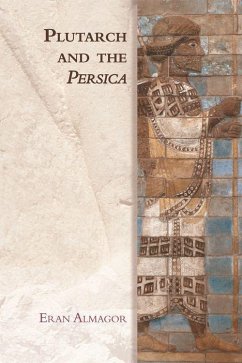This book addresses two historical mysteries: the content and character of fourth century B.C.E. Greek works on the Persian Achaemenid Empire, treatises called the Persica; and the methods of the second century biographer Plutarch of Chaeronea (45--120 C.E.), who based his biographies on these works, particularly his "Life of the Persian king Artaxerxes." Confronting both topics simultaneously, Eran Almagor proposes a new approach to their entangled problems and offers a better understanding of both the portrayal of ancient Persia in the lost Persica works and the manner of their reception and adaptation nearly five hundred years later.
'Almagor provides a sophisticated examination of Plutarch's Artaxerxes and the biographer's adaption of earlier writers of Persica, like Ctesias and Deinon, for his own literary and biographical ends, thereby enhancing our understanding and appreciation of the character and historical value of these lost works and Plutarch's own compositional method.' Craig Cooper, University of Lethbridge A bridge between Plutarch studies and Achaemenid studies, using the Persica works as a link Eran Almagor addresses two historical mysteries. The first is the content and character of the fourth century BC Greek works on the Persian Achaemenid Empire, the Persica. The second is the method of work of the biographer Plutarch of Chaeronea (45-120 AD) who used these works to compose his biographies, in particular the Life of the Persian king Artaxerxes. By dealing with both issues simultaneously, Almagor proposes a new way of approaching the two entangled problems, and offers a better understanding of both the portrayal of ancient Persia in the lost Persica works and the manner of their reception and adaptation nearly 500 years later. Intended for both scholars and students of the Achaemenid Empire and Greek imperial literature, this book bridges the two worlds and two important branches of scholarship. Eran Almagor is the author of several articles on the history of the Achaemenid Empire, its image in Greek literature and on Greek imperial writers. Cover image: Apadana (Darius the Great's Palace) in Susa, Pavillon Sully at the Louvre museum, Paris, France, March 2010 © Mosquito on Flickr Cover design: Barrie [EUP logo] edinburghuniversitypress.com ISBN 978-0-7486-4555-8 Barcode
Hinweis: Dieser Artikel kann nur an eine deutsche Lieferadresse ausgeliefert werden.
'Almagor provides a sophisticated examination of Plutarch's Artaxerxes and the biographer's adaption of earlier writers of Persica, like Ctesias and Deinon, for his own literary and biographical ends, thereby enhancing our understanding and appreciation of the character and historical value of these lost works and Plutarch's own compositional method.' Craig Cooper, University of Lethbridge A bridge between Plutarch studies and Achaemenid studies, using the Persica works as a link Eran Almagor addresses two historical mysteries. The first is the content and character of the fourth century BC Greek works on the Persian Achaemenid Empire, the Persica. The second is the method of work of the biographer Plutarch of Chaeronea (45-120 AD) who used these works to compose his biographies, in particular the Life of the Persian king Artaxerxes. By dealing with both issues simultaneously, Almagor proposes a new way of approaching the two entangled problems, and offers a better understanding of both the portrayal of ancient Persia in the lost Persica works and the manner of their reception and adaptation nearly 500 years later. Intended for both scholars and students of the Achaemenid Empire and Greek imperial literature, this book bridges the two worlds and two important branches of scholarship. Eran Almagor is the author of several articles on the history of the Achaemenid Empire, its image in Greek literature and on Greek imperial writers. Cover image: Apadana (Darius the Great's Palace) in Susa, Pavillon Sully at the Louvre museum, Paris, France, March 2010 © Mosquito on Flickr Cover design: Barrie [EUP logo] edinburghuniversitypress.com ISBN 978-0-7486-4555-8 Barcode
Hinweis: Dieser Artikel kann nur an eine deutsche Lieferadresse ausgeliefert werden.

